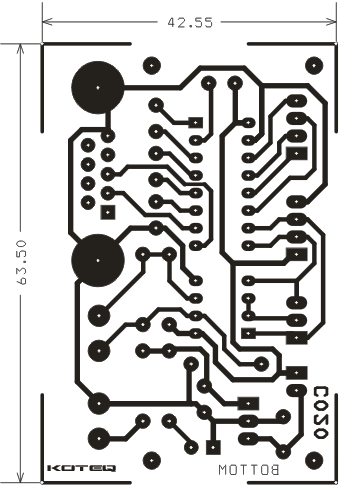The Basics of Rs485 Cable That You Can Benefit From Starting Today
페이지 정보

본문
If PT is set, all transmitted bytes with a parity bit will have an odd number of total '1' bits. This is an extra single bit appended to the end of each byte or character transmitted, which is set or cleared as necessary to ensure that the total number of '1' bits in the byte is always odd or even. If PT is cleared, then all transmitted bytes with a parity bit will have an even number of total '1' bits. As the master transmits its data, 8 bits of data are simultaneously received. When PE is cleared (equal to zero), the most-significant bit of each transmitted character will be a data bit. When PE is set (equal to one), the most-significant bit in each byte transmitted will be a parity bit that is either set or cleared by the serial port automatically in order to achieve even or odd parity. So, for eight data bits with a parity bit, M would be set (equal to one) in order to add an extra bit to each byte transmitted, and PE would be set in order to make that extra bit be used as a parity bit.
Question:What should I do if I can't receive data and the communication is abnormal? So long as the error between the actual baud rate and that specified is less than 1.5% (or the error between transmitter and receiver is less than 3%) there should be no communication errors. The basic rate is 54 Mb / s, but in practice works best in the range of 20 Mb / sRadio network in the case of district heating has proven to be an excellent alternative to other types of communication systems and in this application is an innovative solution. To ensure that no two devices drive the network at the same time, it is necessary that each slave device be able to disable its own RS485 data transmitter. If your application requires communicating with a device that expects to receive a parity bit, the generation of a parity bit and selection of even or odd parity, and whether there are seven or eight data bits in each byte, is performed by setting or clearing bits in the configuration registers SCI0CR1 for Serial1 and SCI1CR1 for Serial2. This allows for basic error detection, in that if noise on the transmission line causes one bit to be received incorrectly, either received as a '0' when transmitted as a '1' or vice-versa, the error would be detected due to the count of '1' bits in the byte being odd when it is expected to be even, or vice-versa depending on the parity checking settings.
Parity checking is not often used, because it is not a robust method of error detection. If two bits are received incorrectly, the error will go unnoticed by parity checking. Serial 2 is implemented by a software UART in the controller’s QED-Forth Kernel that uses two of the processor’s PortA I/O pins to generate a serial communications channel. The master and slave could even exchange ascii QED-Forth operating system commands. Two Tibbo Project System (TPS), Gen. 2-compatible Tibbo BASIC applications for the setup and testing of Bus Probes are available: BP-Tester-UI and BP-Tester-Web. The UART Wildcard provides two simultaneous communications links, each configurable as RS232, RS485 or RS422. For this reason, frame-level cyclic redundancy checks are much more widely used for validating data from serial links, network connections and storage media. The serial interface is asynchronous, meaning that there is no clock transmitted along with the data. Each of the two UARTs on the wildcard is capable of full-duplex communications, meaning that both transmission and reception can occur simultaneously (although the RS485 protocol is half duplex as explained below). RS485Receive() to wait for any pending character transmission to complete, then disable the transmitter, and then execute a routine such as Key() to listen to the communications on the serial bus.

It contributes to the reduction of transmission losses, thus increasing network reliability and comfort of heat consumers. In some cases, however, a sophisticated network may have device groups on a network that use different clock configurations. Given a properly wired network and a properly configured SPCR control register, a master device may transmit a message by simply storing the byte to the SPDR data register. The communications is asynchronous because no synchronizing clock signal is transmitted along with the data. Bauddesired is an unsigned integer from 1 to 56000, 500000 is the frequency of the UART's internal clock and Round(500000/Bauddesired) is an internal divisor (rounded to the nearest integer). The actual baud rate produced differs from that requested by a small error owing to rounding of an internal divisor. The InitSPI() function provides a convenient way to initialize the SPI as the master at a 2MHz baud rate. When the keyword name is received by the Silence() routine running in the slave, the slave PDQ Board executes RS485Transmit() to send an acknowledgment to the master (which should now be listening to the serial bus to accept the acknowledgment).
Should you have virtually any queries with regards to wherever along with how you can employ rs485 cable, you are able to email us in the webpage.
- 이전글바카라블랙잭????{bb4545、coM}????로즈카지노쿠폰메가플레이온카지노카지노이기는법추천 24.06.29
- 다음글로즈카지노쿠폰⎷{BB4545, CΦ Μ}⎷지니바카라추천바카라사이트온라인바카라바카라라이브온라인게임 24.06.29
댓글목록
등록된 댓글이 없습니다.

